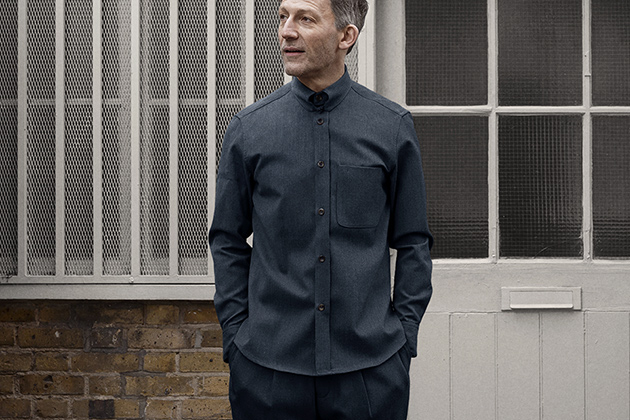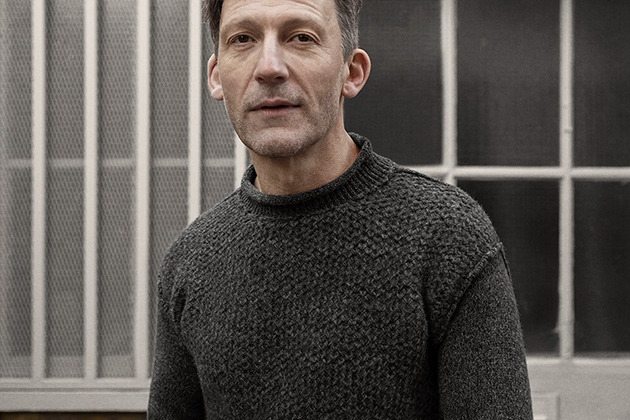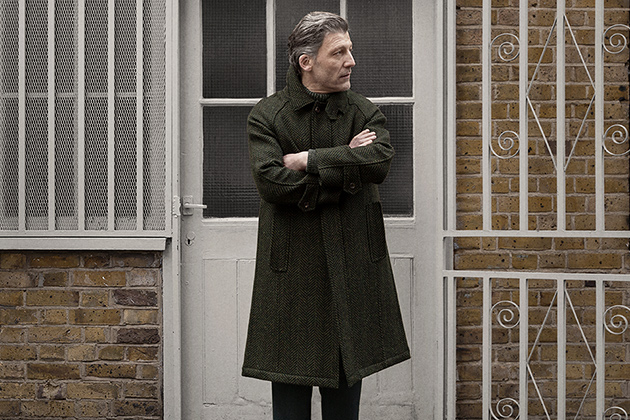Worn
Garments are made as and when — as and when cloth is available, as and when designs are ready, as and when weather turns. Since this page shows garments being worn, it too is updated as and when, steadily through the year.
The gansey — which also goes by the name guernsey in certain coastal areas, and knit-frock in others (though that does seem like cruel and unusual parenting) — is made with geelong lambswool, washed in local waters in Scotland, and is knitted in the the south-west of the British Isles using slow and steady hand-framed techniques.
This particular gansey foregoes the decorative elements of its nautical ancestors — the cable-stitching, ladders, anchors, and other lovely village-of-origin details — in favour of a brutally to-the-point "heavy top-half and light lower" motif, and has shape and sizing better suited to the livelihoods of landlubbers.



The peacoat here is made with heavy melton wool, which is woven by a venerable old mill in the Heavy Woollen District of West Yorkshire. It's an establishment which has been supplying cloth for the military since before the American Civil War (for which, by the by, the mill was the supplier to both sides).

The crewneck is hand-linked — i.e. body and sleeve, sleeve and cuff and hem, are not stitched together. Instead, the tiny knit loops of each part are linked together, with a knitting needle, by a person with nimble and knowledgeable hands. Painfully slow work, as you might imagine, but the only way to achieve a soft and seamless finish.

Texture, here, very much up the wazoo. The yarn is again that very fine, very soft geelong lambswool from Scotland, and if you've ever hugged a sheep of the geelong family you'll know they're incomparably plush and fluffy. It's that same experience, then, just in wearable form: the entire upper body ensconced in warm sheep.
This is a shirt made with worsted cloth from the west of England (inappropriate shirting has been a staple at the workshop since 2009). It has what's called a Kelly collar, which is a fairly round collar cut with a little tab at the end of each point, which when fastened corral the collar together in a pleasing sticky-outy manner.


The balmacaan here is made with tweed of merino lambswool in a particularly wide herringbone design. It is woven exclusively and especially for the job by a mill run by a father and son in County Donegal, where such tweed — the soft handle, the multicoloured neps and burrs — has been the tradition for generations.


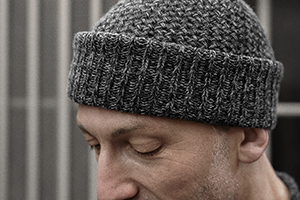
The crown of the watch cap is tuck-stitch, which is the undisputed champion, at least in these parts, of heartily and heavily textured knitwear. It is also a dense stitch, with the strands of yarn folded up and over each other again and again, and so helps keep in the heat very much in the manner of a military-standard tea-cosy.
Warms the body is what the bodywarmer does, and particularly the front of the body, being as it has a heavy eight-ply front. The back, however, is a fraction (27 per cent) of that weight, and thus the bodywarmer can be worn comfortably underneath a coat in winter, serving as a sturdy lambswool shield against the cold.


The thing with the boatneck is, well ... it's not complicated, exactly. But it is complex. It starts off straightforward enough, though, sure — living very much up to its name in featuring a boatneck, which is similar to a crewneck but wider at the sides and higher at the front and back.
But then it has the rolled edges, the differences in weight and stitch at the front and back, the turn-back cuffs, the inverted seams, and boldly cutting through the lot, a full gusset panel running all the way up the side of the body and down through the sleeve. It's a lot for a sweater to bear, and is why the design is possible thanks only to black-belt grade expertise in fully fashioned knitting — tying complexities together to present a sense of simplicity.
With a name like barathea, the cloth from which the field shirt is made was always likely to be a serious deal. It's a twill weave with a pebbly texture, woven in West Yorkshire, with the mercerised merino yarn, so imbued with the rare triumvirate of outstanding tensile strength, luxurious lustre, and a highly resilient springiness.


The popover this time is made with corduroy middle of weight and narrow of wale. It is very soft, particularly its interior, but, cord being a traditional working cloth, is also exceptionally hard-wearing. And, despite being soft and warm on cool days, it is very breathable, and so really rather good all year round.


"Happy to see the back of you!" — you hear it all the time here at the workshop. The back of every item is just as important as the front, see — e.g. the trucker has deep pleats (echoing those at the front) running down from a back yoke (in-line with one at the front) and twixt them sits a belt, which allows the body to be tightened up a little.

This is a trench made with heavy tweed woven in Scotland — in a mill inside an old boat-shed on the Morayshire coast, no less, with cast-iron weaving contraptions of Victorian heritage operated singlehandedly, and using the undyed wool of Herdwick sheep which spend their lives roaming free across the Lake District.

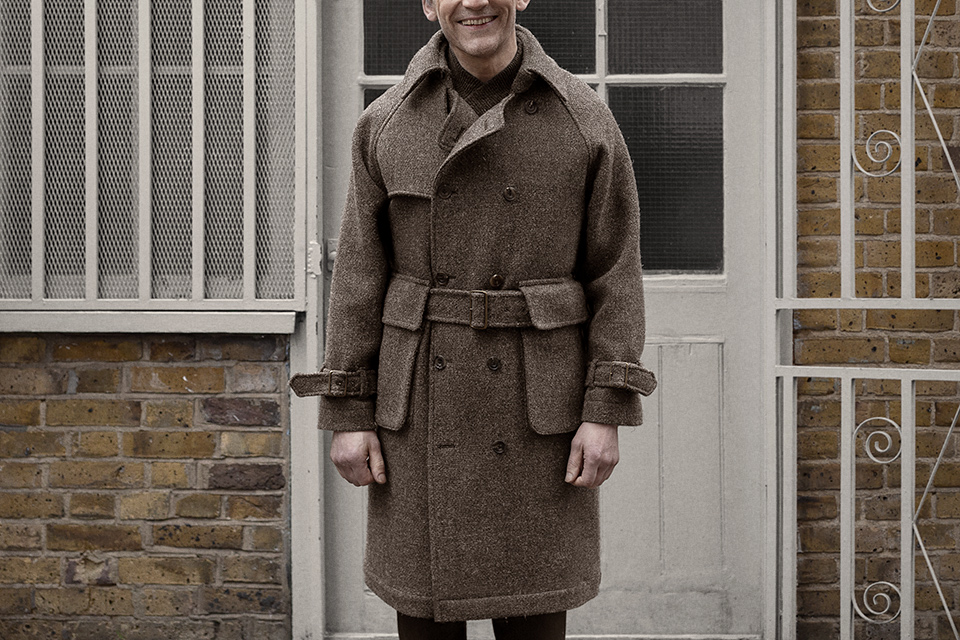

The field coat resides in the loose and unofficial category of technical outerwear. Generally, the category is to pigeonhole anything at the workshop which fastens with poppers rather than buttons. But the field coat really is quite technical, and a block of text such as this is arguably ill-suited for its bulletpointable feature-set.
It has your gusseted action-back, your adjustable belt, your poachers pocket, your loose bellows pockets, your hidden belt channel for wearers belt-averse, etc. But it balances all this with a soft and round collar and soft and round pockets, and is most of the time quiet and modest and an expert only at minding its own business.

Seems only fitting that the balmacaan, being named after an ancient forested estate, comes in a colour known as forest green. It's so deep and dark and dewy in greenness one can almost whiff the pine needles, almost hear the chirps of the willow warbler, almost expect Chris Packham to bound out any moment.

And if you happen to look more closely, you'll realise the tweed is also replete with fluffy wee nuggets of chalk and auburn and burgundy — which is what tends to happen when yarn gets spun by the oldest and perhaps only still-standing spinning mill in Donegal. They not only enliven the cloth and make every square centimetre of it unique, they enhance the base colours of the cloth, which is itself no accident thanks to it being a recipe concocted by the mill that weaves the cloth. It makes for very lively and region-specific woodland.
Worn erstwhile
-
- March — September 2021
- The debuts of the duster, the smock, the DB, and the knitted t-shirt make a mockery of the notion that less (clothing) is more in the warmer weeks of the year.

-
- October 2020 — February 2021
- Many old-stagers from autumns and winters past — the duffle coat, the balmacaan, the peacoat, and the donkey jacket — made returns in refined form.

-
- April — September 2020
- From the poolside (the popover) to the coast (the boatneck) via the railroad (the engineer) — the only way to travel (literally) during a pandemic lockdown.

-
- September 2019 — March 2020
- The tielocken and peacoat found their feet in new heavy woollens from the south and north respectively, while the balaclava, gansey and cooks jacket made their debut.

-
- March — August 2019
- The return of cotton airweave from east Lancashire, and a cloth from North Yorkshire that really puts the local into locally made two-ply tropical worsted.

-
- November 2018 — February 2019
- The tielocken and parka joined the trench in the big-coats-with-belts aisle, while the bal returned in tweed from a mill whose loom was built by the local coffin-maker.

-
- August — October 2018
- Weatherproof ripstop and tropical worsted, the debut of the field coat, and a cavalcade of cotton knits were the talk of the workshop in the warmer parts of 2018.
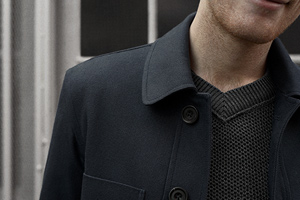
-
- October 2017 — July 2018
- Heavyweight outerwear galore — with the old guard of trench coat, peacoat, duffle coat, and balmacaan, joined by the topcoat, donkey jacket, and flight jacket.

-
- July — September 2017
- New textures for what are quaintly called the warmer months of the year — like a two-ply birdseye, replicating cloth of the 1920s, and a Flyweight flavour of Ventile.

-
- September 2016 — June 2017
- Angora, peccary leather, melton, cotton and linen with some wool mixed in, even some blanketing — a melting of materials for an unusually warm end to the year.

-
- April — August 2016
- Texture, let it be known, is a quality tricky to come by in the warmer months, here in the British Isles. But look — hopsacks, tuck-stitches, and herringbones galore.

-
- September 2015 — March 2016
- The heavy Donegal tweed balmacaan made its debut, as did the heavy duffle coat and, indeed, the heavy fur-felt hat. Lots of heavy things, then, for the colder months.

-
- March — August 2015
- New linens came to the forefront: linen from the south coast of Ireland; linen hand-woven in the Outer Hebrides; linen knitted into crewnecks and cardigans.
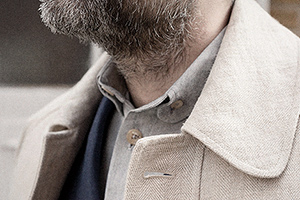
-
- September 2014 — February 2015
- Cloth development came thick and fast: yarn-dyed Ventile at the start of the period, and tweed made with organic and heritage fleece in the Inner Hebrides at the close.

-
- January — August 2014
- Along came the SB1 jacket in hand-woven indigo cotton, the link-stitch crewneck and cardigan, the porkpie Ventile cotton hat, and a brace of cottons from Lancashire.

-
- September — December 2013
- The cotton-twill trench coat rounded the year off, but before that came the peacoat and SB3 in Donegal's finest, as well as lambswool knitwear both heavy and light.

-
- January — August 2013
- The first half of the year began with the three-button Tetris tweed blazer and concluded with an assortment of corduroy and cotton numbers — plus some shorts.

-
- August — December 2012
- Heavyweight tuck-stitch jumpers, the wool-tweed peacoat made with the one-man-mill, and the debut of both the reversible jacket and the Ventile mac.

-
- December 2011 — June 2012
- Early spring was met by the British Millerain dry-wax and cashmere mac, and kept busy with the linen suit, new tour jacket, and two-button neat jacket.

-
- August — November 2011
- The last few months of 2011 witnessed the release of the chalkstripe-wool seam overshirt, the hopsack tweed neat jacket, and the birdseye wool-cashmere blazer.

-
- February — May 2011
- Spring and early summer saw linen semi-cutaway shirts, the horizontal cord blazer, panama stowaway overshirts, and the cycle-friendly brushed cotton tour jacket.

-
- September 2010 — January 2011
- The work jacket made a first appearance in French navy cotton-twill and charcoal wool-cashmere. And, on the knitwear front, Shetland Isle moss-stitch jumpers.
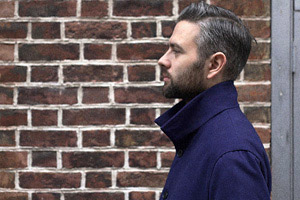
-
- May — August 2010
- Five mostly interchangeable garments were made over the middle months of the year: two semi-cutaway shirts, two cotton-drill trousers, and a corduroy overshirt.






